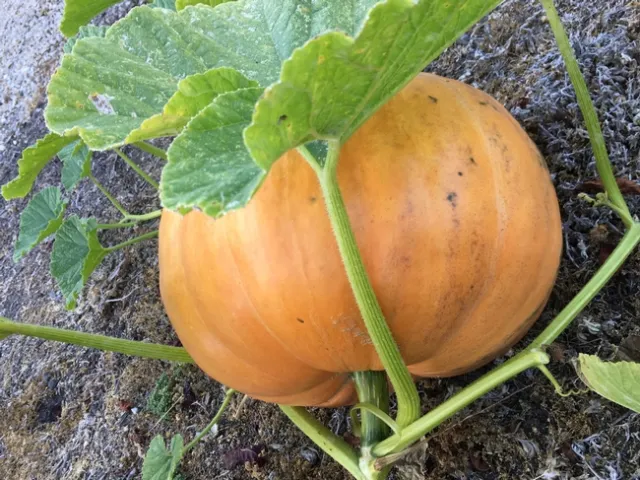
Pumpkins
By Linda Lewis Griffith UCCE Master Gardener
Planting Zone: All zones
Size: Variable
Bloom Season: Plants flower in summer, fruit ripens in fall
Exposure: Full sun
Water Needs: Water regularly but keep foliage dry to prevent disease
Narrative:Nothing says fall like a home-grown pumpkin. This member of the Cucurbitacea family is native to the Andes and related to gourds and melons. All are large, low-growing vines with yellow or orange blossoms. Male flowers are smaller, appear first and produce pollen. Larger female flowers produce the fruit.
Pumpkins vary widely in size. Miniature varieties, such as Jack Be Little and Munchkin, are used for decorations. White skinned Lumina is both novel and attractive, and is excellent for baking. Atlantic Giant tops the scale at 200 pounds. Pumpkins are easy and rewarding to grow. They do, however, require lots of space. An individual vine can cover 500 square feet. Plant seeds by June to have them ready for fall. They can be planted directly into the ground, or started in pots, then transplanted as the plants mature and the weather warms. Pumpkins do best in soil amended with compost or manure. Add a balanced fertilizer at planting time. Create a mound of soil, then plant three seeds one inch deep and one inch apart. After germination, thin to one seedling, ensuring the healthiest survives. If planting several mounds, space them three to four feet apart. Water daily at first. As vines mature and spread, switch to deep watering every five to seven days, allowing the soil surface to dry between watering. Avoid getting water on the foliage to prevent mildew and other disease. Fertilize monthly with one tablespoon vegetable fertilizer raked into the soil. As flowers set, bees will help pollinate the fruit. Consider planting herbs, ornamentals and other flowering vegetables nearby to attract bees and beneficial insects. To promote larger fruit, select one or two from each plant, removing all others on the vine. In late summer, slide wooden shingles or other materials to protect developing fruit from wet soil and rot. Leaves may wilt on extremely hot days but typically recover as the temperature cools at night. Depending on the variety, pumpkins are ready in 90 to 120 days. To harvest, use a sharp knife to cut the stem, leaving three to five inches. Avoid picking pumpkins up by the stem.

